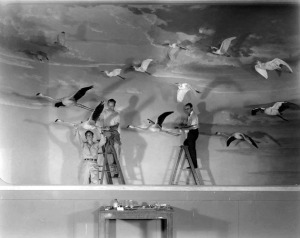The Internet has allowed collections to take on a whole new meaning, and a whole new form. Everyone is a collector now - of photos, of friends, articles, links, charts, followers, websites and blogs. Your bookmark bar is a collection. Your twitter followers are a collection. I am becoming fascinated with the issues of taxonomy, cataloging and organizing these online collections - it is the intersection of data collection and management, archiving and cataloging these non-tangible, yet visible items.
As a result of how large the internet is, I am constantly looking for ways to keep my collections in check - keeping them cohesive, connected, accessible and logical, while at the same time using each of the various web tools independently. Content can be posted to multiple social sites at one time, or kept separate. This bring into the fold the issue of keeping various social site connected, yet relevant instead of redundant. Is my attempt to appeal to different audiences or share the same information in a variety of ways? Unlike these various social websites, blogs are slightly easier as they are assigned a theme or topic, and so the content can be tailored in this way.
In order to keep track of my own online collections, I have been exploring various bookmarking sites in order to save, catalog, categorize, tag, and organize web content. I make excellent use of my bookmarks bar on my web browser, but between work, home and my smart phone I finally started exploring the various options for "social bookmarking" site and apps; one place to keep track of everything.
The social aspect is far less important to me than the bookmarking aspect. At first I was using Evernote - a fantastic site with an equally fantastic app that goes with it. Evernote lets you clip anything from documents to images to web URLs, and organize them into "notebooks". I loved Evernote so much that I quickly filled up my allowed storage and seem to often go over my monthly allowances (I don't think this should be a concern for the average user). The downfall with Evernote is it's design - it's effective, but just not nice to to look at, and it lacks a certain simplicity. As much as I enjoy this tool, it's strength is in it's ability to multi-task, when I only need it to complete one task, and complete it well: bookmarking.
I moved onto delicious, digg and hunted around trying a variety of other sites, but I want more than something that can be organized into different lists. Only recently have I found the answer for my collections of links!

Finally, I found it - Pearltree is my new obsession, and allows me to interact with the internet in a more intuitive way. With pearl tree, your links are represented by "pearls" and connected together in a tree of a configuration of your choosing. To me, its a series of mind maps and instead of using tags, things are organized into collections, groups, sub groups and can be dragged and dropped easily wherever I want them, and displayed in an aesthetically pleasing, cleverly designed and entirely visual way.
How do you keep track of your web based and web related collections?

 The dictionary states that materialism, or being materialistic is "the theory or attitude that physical well-being and worldly possessions constitute the greatest good and highest value in life." While I don't adhere to this, I have a certain respect, appreciation and admiration for objects. Obviously the objects that we surround ourselves with reflect choices, and therefore represent who we are, where we've been, what we like and how we reflect our identity to ourselves and those around us. We hoard our possessions and our treasures in a private way. Even as I write this, a small glass jar terrarium, a postcard with the photo of an Iceberg off the coast of Newfoundland and a small plastic figurine of a penguin stare down from a shelf above my desk.
The dictionary states that materialism, or being materialistic is "the theory or attitude that physical well-being and worldly possessions constitute the greatest good and highest value in life." While I don't adhere to this, I have a certain respect, appreciation and admiration for objects. Obviously the objects that we surround ourselves with reflect choices, and therefore represent who we are, where we've been, what we like and how we reflect our identity to ourselves and those around us. We hoard our possessions and our treasures in a private way. Even as I write this, a small glass jar terrarium, a postcard with the photo of an Iceberg off the coast of Newfoundland and a small plastic figurine of a penguin stare down from a shelf above my desk. 






















